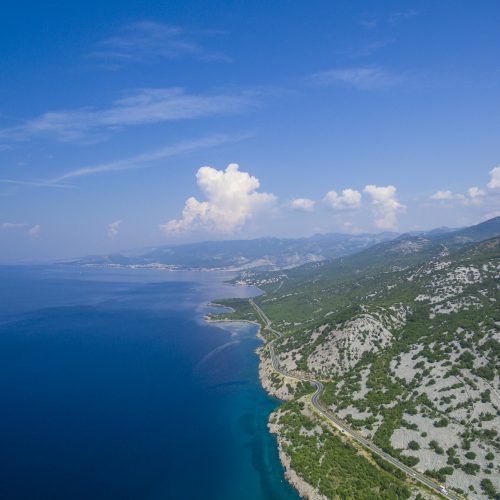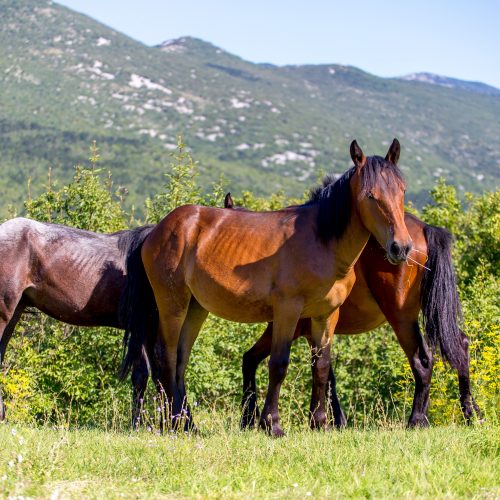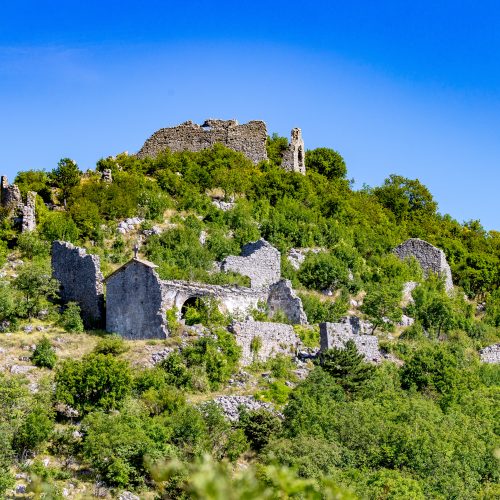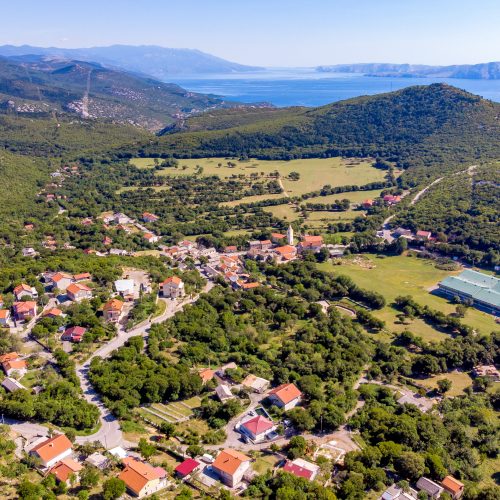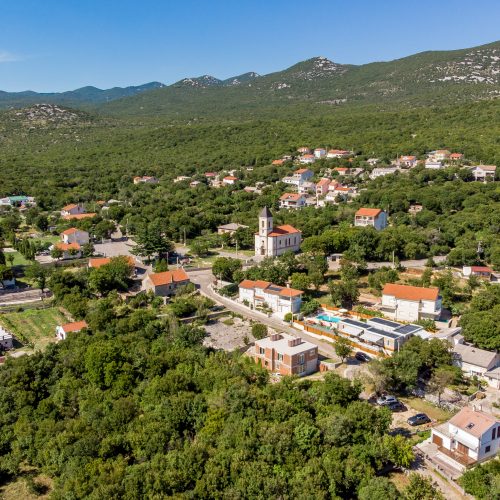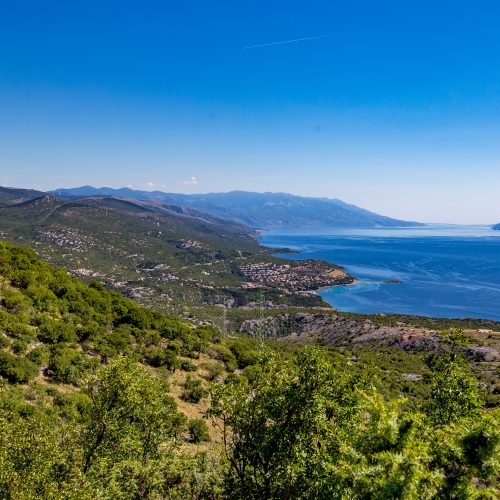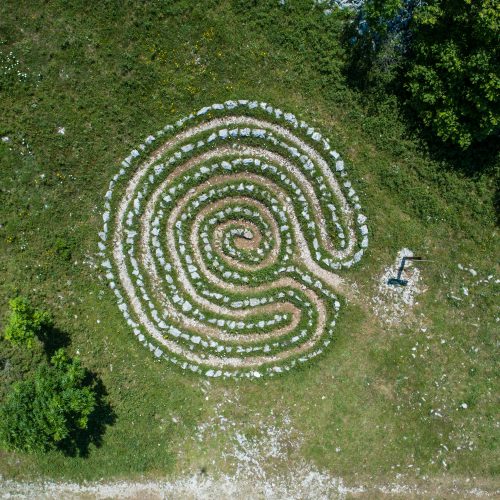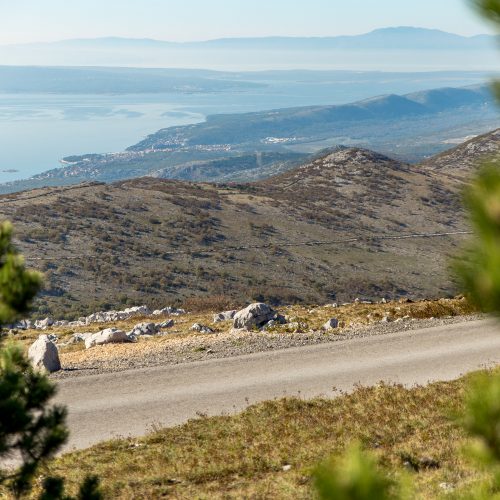The hinterland of Novi Vinodolski
The administrative area of the town of Novi Vinodolski today includes twenty statistical settlements, and these are, in addition to Novi Vinodolski and coastal settlements that make up Novi Vinodolski Riviera and settlements in the transitional slopes and hilly areas:
Bater, Bile, Breze, Crno, Donji Zagon, Drinak, Gornji Zagon, Jakov polje, Javorje, Krmpotske Vodice, Ledenice, Luka Krmpotska, Podmelnik, Ruševo Krmpotsko, Zabukovac.
About 10% of the total population lives in this area. The most important resource of the area is its preserved nature, large areas of beech and coniferous forests, mountain pastures that alternate with mountain peaks. There are no more permanent residents in the settlements Krmpotske Vodice, Podmelnik and Zabukovac, but they are increasingly visited by hikers and tourists.
Ledenice
The settlement Ledenice is located in the hinterland of the town along a rocky hill on the south-eastern edge of the former Vinodol principality. When the famous Croatian writer August Šenoa visited Ledenice, it inspired his famous work Kugina kuća. On the hill are the ruins of a medieval fortified town. The old town on the hill was abandoned in the 17th century when the population moved to the valley where today’s settlement originates. In addition to the old town, there is a historical cemetery in a circular sinkhole. Ledenice is a registered cultural monument, and it is increasingly turning to the development of rural tourism.
Bater
Along the road Novi Vinodolski – Jezerane in the area of transitional slopes, the settlement Bater is located. It is about 2 km airline distance from the coast. The settlement is of rural character and, in addition to its housing function, has developed in the direction of agriculture and livestock farming, and thus the related production of domestic food products.
Breze
The settlement Breze is located in a hilly area at approximately 800 meters above sea level along the road Novi Vinodolski – Jezerane – Jasenak. Breze is known for wood industry, and in recent years has become an extremely attractive vacation spot. Nature and fresh air, lack of crowds and summer heat, and the proximity of the sea and the sun, are a winning combination for the escape from everyday life and for a holiday for every modern man. It is also characterised by the proximity of numerous picnic areas, belvederes, bike trails and the possibility of hunting.
Donji Zagon
Donji Zagon is about 7 kilometres away from Novi Vinodolski by road, at 220 m above sea level. Rural settlement, with its 145 inhabitants (2011), who mostly work in Novi Vinodolski, in recent years has been turning to the construction of increasingly popular holiday homes, popularising this peaceful, almost rural idyllic environment. The peaceful and quality life that Donji Zagon can offer is supported by the permanent immigration of several families in the past two decades, that have moved from large urban areas to Donji Zagon. There are several active family farms in the village. In mid-June, around the 13th, on the commemoration of the village patron St. Ante Padovanski, the famous indoor football tournament is organised.
Gornji Zagon
One of the Novi’s villages that has experienced the fate of many other Croatian villages is Gornji Zagon. Migration from this karst area began in the late 20th century to distant lands overseas. It continued significantly after the Second World War, so today it is almost completely without inhabitants, unlike other villages in the hinterland of Novi. In 2019, the road passing thought Gornji Zagon was completely paved, and if you turn left from the village Bater, you will pass the old littoral villages Krasnica, Kal, Trbotinj, Valač and Plužnice. Even though there are no inhabitants, houses and estates were renovated in recent decades. Due to the proximity of Novi Vinodolski and peaceful environment, the intentions to develop rural tourism are increasing.
Krmpote
There are several villages and hamlets in Krmpote area. People from Krmpote themselves divide them into upper, middle and coastal villages. The upper villages include: Luka, Pavličevići, Grujići, Jurići, Radići, Zabukovac and Bukovac, middle: Bačići, Podmelnik, Ruševo Krmpotsko, Omar and Podomar, and coastal villages: Bile, Staro Selo, Vukeljska Draga, Jakov Polje, Dubrava, Drinak, Poljica.
The people from Krmpote settled in the area, located on the slopes of the Kapela, in the third decade of the 17th century. The life of people from Krmpote was very difficult, as there was little arable land, so many immigrated all over the world. The post-war years brought the displacement of the Krmpote region in search of employment, so the population became predominantly elderly.
Today, Krmpote is becoming an increasingly attractive place to live, especially for young people. Untouched nature, fresh and clean air, proximity to hiking trails, and beaches and seas in Smokvica Krmpotska and Klenovica, influenced the development of tourism in the area.

